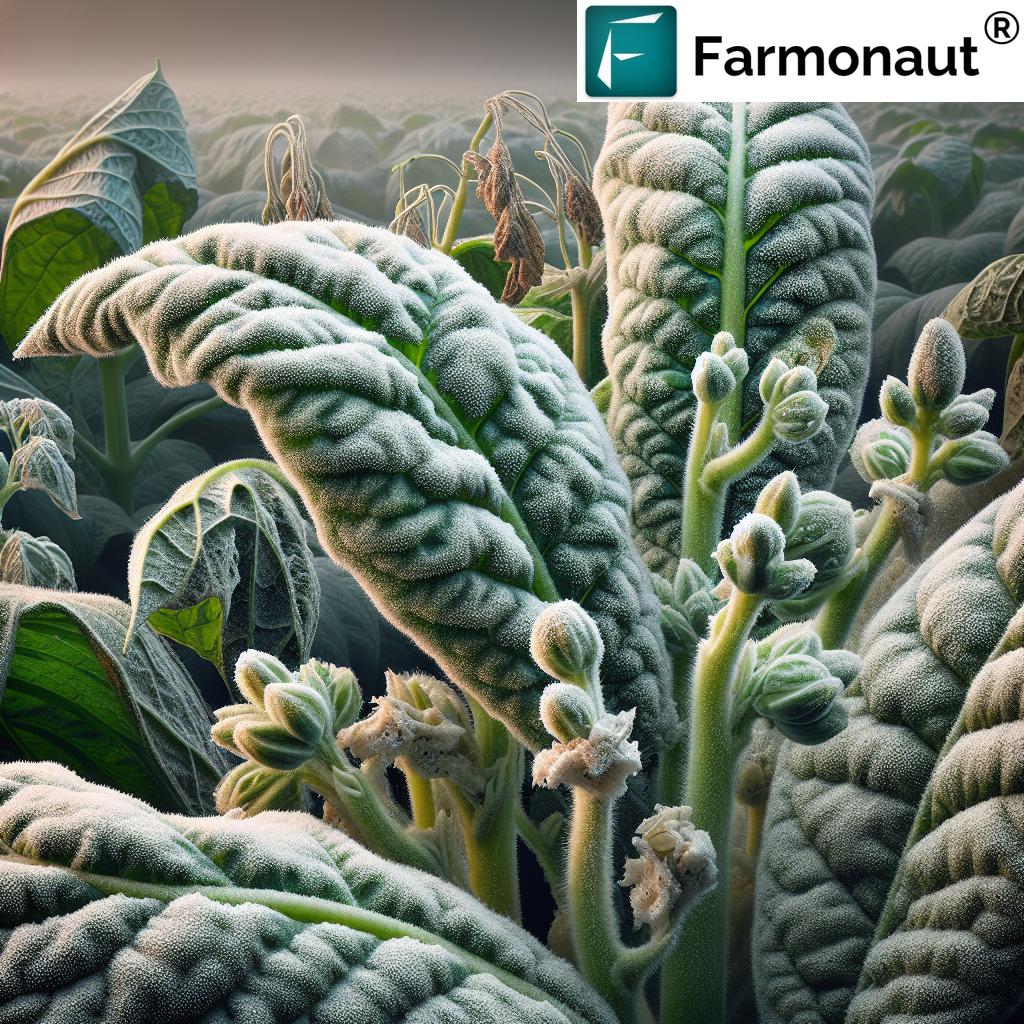Black Dots on Lemon Tree Leaves: 7 Best Solutions
“Up to 80% of lemon trees can show black spots due to fungal infections if not managed early.”
“Over 5 common pests and pathogens are responsible for black dots on lemon tree leaves worldwide.”
Introduction: Why Black Dots on Lemon Tree Leaves Matter
Lemon trees hold a place of immense value in agriculture, providing significant economic and nutritional benefits to growers and communities. However, the unexpected appearance of black spots on lemon tree leaves can quickly become a major concern, indicating underlying issues such as fungal infections, bacterial diseases, and pest infestations.
Early detection and accurate understanding of these causes, symptoms, and management strategies are essential for maintaining healthy lemon orchards. Prompt action can prevent the spread of disease, preserve fruit yield, and safeguard the long-term productivity of your citrus trees.
In this comprehensive guide, we’ll break down the 7 best solutions for combating black dots on lemon tree leaves, include tips on citrus leaf spot treatment, and provide expert advice for lemon tree pest management. We’ll also explore the latest advancements in remote monitoring and advisory technology to aid you in how to prevent lemon tree leaf spots and minimize damage.
Common Causes of Black Dots on Lemon Tree Leaves
The occurrence of black spots on lemon tree leaves may be attributed to a combination of fungal, bacterial, and pest-related infections. Recognizing the most common causes and their distinct symptoms is the first step in targeted management.
- Citrus Black Spot (CBS): Caused by Phyllosticta citricarpa, resulting in small, dark lesions with gray centers and red or brown margins. These spots can develop into larger, circular necrotic areas impacting both leaves and fruits.
- Alternaria Black Rot: Stemming from the fungus Alternaria citri, this disease manifests as black rot and hyphae formation, especially on damaged and overripe fruits, with a preference for hot, semi-arid climates.
- Bacterial Blast: A bacterial disease from Pseudomonas syringae, causing dark lesions, leaf axil girdling, and eventual leaf drop.
- Pest Infestations:
- Aphids: Insects feeding on sap, producing honeydew that invites sooty mold and blackening of foliage.
- Citrus Leaf Miner: Larvae tunnel in leaves, creating visible winding trails and distorted leaf structure.
- Citrus Psylla: Galls and malformations in leaves, contributing to the appearance of black spots.
Understanding the Underlying Issues Behind Lemon Tree Leaf Spots
Black dots on lemon leaves typically indicate the onset of lemon tree diseases. Without timely attention, the spread of these issues can reduce plant health, yield, and even affect the long-term growth of your citrus orchards.
- Premature Fruit Drop: Some fungal diseases and bacterial infections directly impact fruit attachment, leading to harvest losses.
- Reduced Yield and Distorted Foliage: Both pest infestations and rot-causing pathogens can result in smaller or diminished fruits, distorted plant structure, and unhealthy leaf appearance.
Symptoms and Identification: Black Spots on Lemon Tree Leaves
Detecting black spots on lemon tree leaves involves observing distinct symptoms and recognizing specific patterns (location, shape, color, margins).
Fungal Infections in Lemon Trees
- Appearance: Dark, sunken lesions with clear margins, may have gray centers.
- Progression: Spots can develop into larger, circular, necrotic regions with reddish or brown margins.
- Other Signs: Increased leaf fall, premature fruit drop, or visible fungal growth (hyphae or mold).
Bacterial Infections
- Spots: Water-soaked, dark spots that quickly turn black.
- Texture: Soft or scabby lesions, sometimes girdling the axil or branch junction.
- Additional Symptoms: Withering, wilting, or falling leaves; potential scab formation.
Pest Infestations
- Aphids and Sooty Mold: Sticky honeydew deposits quickly covered by black mold, speckling leaves.
- Leaf Miners: Curled, distorted foliage with pale tunnels, sometimes surrounded by dark patches.
- Citrus Psylla: Misshapen leaves, galls, necrotic black dots, or yellow-brown margins on young growth.
Careful examination and correct diagnosis are critical for lemon tree pest management and effective citrus leaf spot treatment.
“Up to 80% of lemon trees can show black spots due to fungal infections if not managed early.”
“Over 5 common pests and pathogens are responsible for black dots on lemon tree leaves worldwide.”
Problem–Solution Table: Causes, Symptoms & 7 Best Solutions
| Cause/Problem | Visible Symptoms | Recommended Solution | Application Method | Estimated Effectiveness (%) | Preventive Tips |
|---|---|---|---|---|---|
| Citrus Black Spot (CBS) Phyllosticta citricarpa |
Small, black spots; gray centers; red/brown margins; fruit drop | Fungicide application (copper-based) & pruning | Spray trees pre-monsoon & during active lesion phase | 80–90% | Remove infected debris, improve air circulation, monitor regularly |
| Alternaria Black Rot Alternaria citri |
Black rot on fruit, brightly colored patches, hyphae on surface | Fungicides (bio or chemical) & sanitation | Spray at intervals, remove fallen debris | 75–90% | Harvest fruit promptly, avoid wounds |
| Bacterial Blast Pseudomonas syringae |
Black watery spots, scab, leaf drop, withered leaves | Copper-based bactericides, prune infected parts | Targeted sprays and tool disinfection | 70–85% | Shield from wind, remove affected branches |
| Aphids | Sticky honeydew, black sooty mold, curled leaves | Insecticides, introduce beneficial insects (ladybugs) | Foliar sprays and releasing predators | 75–90% | Promote natural enemies, avoid excess nitrogen |
| Citrus Leaf Miner | Winding trails, distorted & curled leaves, black dots | Insecticide sprays, pheromone traps | Timely intervention during larval activity | 65–80% | Use resistant varieties, monitor growth |
| Citrus Psylla | Leaf galls, malformed leaves, black necrotic dots | Systemic insecticides, timely pruning | Apply during pest emergence | 70–85% | Remove infested shoots, control ant populations |
| Environmental Stress (Humidity, Poor Air) | Widespread small dots, yellowing, slow growth | Adjust irrigation, enhance air flow, improve soil health | Optimize orchard micro-environment | Up to 80% | Mulch, drip irrigation, avoid water on foliage |
7 Best Solutions for Black Spots on Lemon Tree Leaves
1. Pruning and Sanitation: First Defense Against Disease Spread
Pruning infected leaves and branches remains a crucial practice to reduce the spread of fungal and bacterial diseases. Always:
- Remove and destroy visibly diseased plant parts.
- Sterilize pruning tools between cuts to prevent cross-contamination.
- Clear fallen leaves, fruit debris, and old growth from the orchard floor.
- Implement seasonal pruning after rainfall, windy periods, or pest outbreaks.
Proper sanitation inhibits the formation and spread of new lesions across the tree canopy. It also enhances penetration and effectiveness of sprays.
2. Judicious Use of Fungicides: Targeting Fungal Infections in Lemon Trees
Fungicides—especially copper-based and biological products—are vital in combating stubborn fungal infections like Citrus Black Spot and Alternaria rot. For optimal results:
- Consult agricultural guidelines to choose the right product for your leaf spot disease.
- Spray at the onset of symptoms or prior to typical infection seasons (e.g., pre-monsoon).
- Ensure thorough coverage of uppers and lowers of leaves and fruit.
- Rotate chemical classes to reduce resistance development and maintain long-term efficacy.
Always observe pre-harvest intervals and use only approved fungicides for citrus crops.
Introducing advanced remote diagnostics: With Farmonaut’s crop health monitoring platform, growers receive real-time alerts on abnormal vegetation patterns suggestive of disease or pest stress. This targeted system allows for early identification and precision intervention, greatly improving the success rate of citrus leaf spot treatment and overall lemon tree pest management.
Explore AI-based advisory and satellite-powered surveillance for:
- Carbon Footprinting: Track & reduce your orchard’s environmental impact.
- Fleet Management: Coordinate pest control operations efficiently across large orchards using intuitive mapping and vehicle tracking tools.
Get started with the Farmonaut App, available for Android and iOS, or access satellite API for seamless integration in farm management systems:
- API: Farmonaut Data API
- Developer Docs: API Developer Documentation
By leveraging Farmonaut’s advanced technologies, farmers can efficiently address the causes of black dots on lemon leaves and reduce losses across different farm scales.
3. Targeted Pest Management: Stop Sooty Mold and Leaf Distortion
Pest infestations are a pivotal cause of black dots on lemon tree leaves. Lemon tree pest management blends chemical and biological controls for maximum benefit:
Chemical Controls
- Insecticides: Spray at low pest thresholds to prevent population explosions.
- Pheromone traps: Attract and monitor specific pests like citrus leaf miners.
- Spot treatments: Target areas of visible damage or honeydew build-up.
Biological Controls
- Release beneficial insects: Ladybugs, lacewings, parasitic wasps reduce aphid and psyllid populations.
- Encourage natural enemies: Maintain habitat such as flowering borders.
- Organic soaps and neem oil: Can remove honeydew and suppress mild infestations safely.
For persistent citrus pest infestation control, always rotate strategies and integrate non-chemical interventions when possible.
4. Environmental Management: Optimize Growth Conditions
Unfavorable conditions such as stagnant air, excessive humidity, or poor soil drainage can weaken plants, making them more susceptible to disease and spots. Effective cultural management includes:
- Monitor soil health and use organic matter to improve structure.
- Maintain good drainage—avoid waterlogged areas where fungal pathogens thrive.
- Water at the base of trees, not the leaves, to prevent prolonged moisture on foliage.
- Mulch to suppress weeds and limit soil splash of pathogens onto lower leaves.
- Space trees to promote air flow, reducing humidity and dew retention.
Healthy citrus orchards ultimately reduce the need for repeated chemical treatments.
5. Resistant Varieties and Quarantine: Forward-Thinking Disease Prevention
Choosing disease-resistant lemon varieties can dramatically lower the likelihood of major citrus leaf spot outbreaks:
- Research locally available, improved citrus cultivars bred for fungal and bacterial disease resistance.
- Isolate all new planting material in a quarantine area for observation before introducing it to established orchards.
- Regularly monitor and test new plants for lesions and signs of stress.
Tip: Check local nurseries for certification and provenance to minimize introduction of unseen issues.
6. Balanced Fertility & Regular Monitoring
Excessive nitrogen fertilizer promotes rapid, weak growth, which is vulnerable to pest and disease attacks (especially aphids and fungal pathogens). For robust citrus tree health:
- Use slow-release, balanced fertilizers.
- Incorporate organic compost for gradual nutrient supply.
- Monitor leaf color, fruit development, and shoot vigor for early symptoms of deficiencies or excesses.
- Test soil and water quality at least once a year to ensure long-term health of lemon trees.
This continuous observation, now made easier with Farmonaut’s real-time crop health monitoring, greatly increases the chances of successful lemon tree diseases management and prevention.
7. Integrated Pest & Disease Management (IPM) in Citrus Orchards
An integrated approach combines all prevention and control measures for enduring citrus orchard health:
- Scout fields weekly: Identify new spots, lesions, or damage early.
- Keep detailed records: Track outbreaks, treatments, weather conditions, and varietal performance.
- Rotate solutions: Avoid repeated use of the same chemical class or method to limit resistance and maintain effectiveness.
- Involve technology: Use satellite mapping, AI, and digital advisory tools for smarter decision making across large scales—all available via large scale farm management.
Each of these interactive management practices facilitates how to prevent lemon tree leaf spots and builds orchard resilience over time.
Affordable Satellite-Based Citrus Orchard Monitoring by Farmonaut
Farmonaut offers subscription plans for individual farmers, agribusinesses, and agricultural institutions with full access to satellite crop health alerts, soil moisture indices, and pest/disease detection across all device platforms.
Farmonaut Technology for Citrus Leaf Spot Management
At Farmonaut, we deliver comprehensive solutions for citrus growers, drawing on advanced satellite imagery, AI-powered advisory, and data-driven management strategies.
- Real-time Crop Health Monitoring: Instantly receive alerts for abnormal leaf color, growth changes, and early-stage pest/disease impact using multispectral satellite images.
- Carbon Footprinting: Strategically monitor and reduce emissions while increasing orchard efficiency and sustainability.
- Fleet Management: Organize pest/disease control and other maintenance logistics seamlessly with field-mapping and vehicle-tracking features.
- Blockchain-Based Product Traceability: Ensure your lemons and citrus supply chain maintain transparency and trust from orchard to consumer, combatting fraud and protecting your brand’s reputation.
Our vision is to make precision agriculture and integrated pest management affordable and accessible—empowering growers worldwide with the resources they need to maintain healthy, productive lemon trees and vibrant orchards.
Whether you are a smallholder grower or a large estate manager, our web and mobile app is the single-stop platform for early diagnosis, real-time monitoring, and resource optimization—critical features for eliminating citrus black spot symptoms and ensuring citrus tree health.
Frequently Asked Questions about Black Dots on Lemon Tree Leaves
What are the main causes of black spots on lemon tree leaves?
The most common causes are fungal infections such as Phyllosticta citricarpa (Citrus Black Spot) and Alternaria citri (Alternaria Black Rot), bacterial diseases like Pseudomonas syringae (Bacterial Blast), and pest infestations from aphids, citrus leaf miners, and citrus psylla.
How can I distinguish between fungal, bacterial, and pest-related dots?
- Fungal: Spots are usually dark, sunken with clear margins; may have grey centers.
- Bacterial: Lesions are water-soaked, turn black quickly, sometimes with scab formation and leaf drop.
- Pests: Honeydew and sooty mold (from aphids), winding trails (leaf miner), galls and necrotic spots (psyllid).
Which cultural practices help prevent lemon tree diseases?
Practice regular pruning, tool sanitation, avoid overhead watering, maintain proper spacing, enhance air flow, and keep composted soil healthy.
What is the best citrus leaf spot treatment?
For fungal diseases, copper-based fungicides administered at the right time offer robust control. Combine with prompt pruning and orchard sanitation for maximum effectiveness.
How do I use biological controls to manage lemon tree pests?
Introduce ladybugs, lacewings, and parasitoid wasps in the orchard. Avoid broad-spectrum insecticides that harm these beneficial insects. Organic soaps and neem oil sprays can also suppress minor infestations.
Are there lemon varieties resistant to black spot?
Yes, consult agri-extension specialists or certified nurseries for improved, disease-resistant citrus cultivars suitable for your region.
Can regular use of Farmonaut help prevent and detect lemon tree leaf diseases?
Absolutely. Farmonaut’s real-time crop health tracking and AI-based advisory identify vegetation stress early, monitor disease outbreaks, and guide production teams—thereby reducing yield losses and managing resources efficiently.
Do lemon tree pests and pathogens pose a risk to other citrus plants?
Yes. Many pathogens like Phyllosticta citricarpa and pests such as aphids can spread to oranges, limes, and other citrus species, so integrated management and monitoring are essential across the entire orchard or region.
Conclusion: Keeping Lemon Trees Healthy & Productive
The appearance of black dots on lemon tree leaves serves as a warning sign that should never be ignored. Timely attention to causes, swift recognition of symptoms, and precise management strategies are vital in maintaining healthy orchards and ensuring continued fruit yield and quality.
The seven solutions discussed—ranging from pruning and sanitation to advanced monitoring with Farmonaut—work best when applied collectively as part of a comprehensive, integrated pest and disease management plan. By emulating best agricultural practices and embracing modern technology, growers can prevent the spread of lemon tree diseases, reduce input costs, and sustain orchard health for years to come.
Let’s continue to advance citrus production not only with traditional wisdom but also with forward-thinking, digital solutions. Digital tools like Farmonaut empower every grower with crop-specific insights, enable precise resource management, and open up a new era of sustainable lemon cultivation worldwide.













